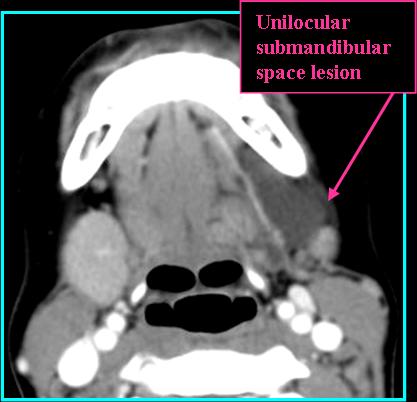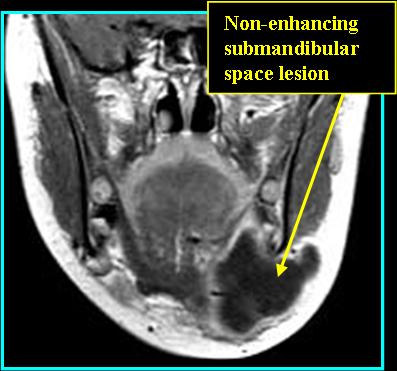see also: Sclerotherapy with Ultrasound Guidance for Lymphangioma with Doxycycline
- Also known as lymphangioma
- Congenital developmental anomalies of the lymphatic system forming micro- or macrocytstic lesions (Wiegand et al. 2022; Bertino et al. 2021)
- Associated with Proteus and CLOVES syndrome (Wiegand et al. 2022)
- Most commonly present in head and neck region but may be in other lymphatic-rich areas as well (Wiegand et al. 2022)
- Usually presents within first two years of life but may have a delayed presentation in adulthood (Wiegand et al. 2022)
- Larger lesions may be seen on prenatal imaging (Bertino et al. 2021)
- Symptoms include minimal swelling to possible airway obstruction, impaired oral feeding, macroglossia, loss of vision, and pain (Wiegand et al. 2022)
- Acute enlargement may occur with infection, trauma, or hemorrhage; otherwise, it generally grows proportionally as the patient grows (Wiegand et al. 2022)
- On CT: Fluid densities, poorly-circumscibed with or without fluid levels, no enhancement with contrast
- On MR: Hypointense on T1 unless hemorrhage or abscess present; hyperintense on T2; post-contrast T1 is non-enhancing unless infected
![]()

![]()

![]()

References
Wiegand S, Dietz A, Wichmann G. Efficacy of sirolimus in children with lymphatic malformations of the head and neck. Eur Arch Otorhinolaryngol. 2022 Aug;279(8):3801-3810. doi: 10.1007/s00405-022-07378-8. Epub 2022 May 8. PMID: 35526176; PMCID: PMC9249683.
Bertino F, Trofimova AV, Gilyard SN, Hawkins CM. Vascular anomalies of the head and neck: diagnosis and treatment. Pediatr Radiol. 2021 Jun;51(7):1162-1184. doi: 10.1007/s00247-021-04968-2. Epub 2021 Apr 16. PMID: 33860862.